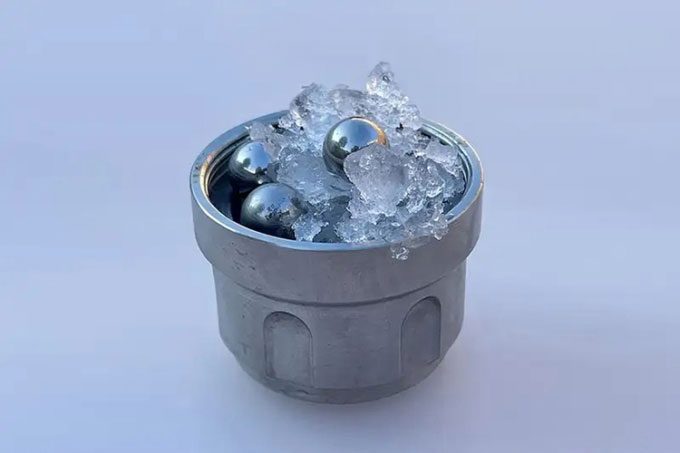Researchers from University College London have created a never-before-seen form of ice that could illuminate the mysteries of liquid water.
When water freezes naturally on Earth, its molecules stack together in an organized crystalline structure. This crystalline ice layer is one of the peculiar characteristics of H2O, as it floats on the surface of liquid water in its solid state instead of sinking. The reason lies in the relatively large voids in the crystalline structure of ice compared to other materials that form denser structures when they crystallize.
However, if manipulated correctly, liquid water can also freeze in an amorphous or disordered state. We are already familiar with two types of amorphous ice: high density and low density. There was a gap in between that researchers believed could not be bridged to create medium-density amorphous ice, or MDA. Yet, when Professor of Physical Chemistry Christoph Salzmann and his colleagues at University College London placed ordinary ice—featuring a hexagonal crystalline structure—into a cup with steel ball bearings cooled to -200°C, something remarkable happened.
The experiment produced MDA, astonishing everyone. It has a density that falls between the two known forms of amorphous ice, almost precisely matching the density of liquid water, according to research published in the journal Science on February 2.

Medium-density amorphous ice created by exposing ordinary ice to very cold steel ball bearings. (Photo: Christoph Salzmann).
The new form of ice forms at -196°C. It has a density of 1.06g/cm3; for comparison, water has a density of 1g/cm3. Additionally, it exhibits several strange properties, such as when researchers compressed and heated medium-density amorphous ice to -120°C, it crystallized again and released a significant amount of heat.
“With other forms of amorphous ice, if you compress them and release the pressure, nothing happens. But MDA somehow has the ability to store mechanical energy and release it through heating,” Salzmann explained.
The research team suggests that MDA could be water in a “glassy phase”, a state of matter that continues to behave like a liquid even at extremely low temperatures (for short periods, glass can appear solid, but over longer durations it flows like a viscous liquid).
Liquid water appears normal but holds mysteries when cooled to extremely low temperatures. Based on the gap between low-density and high-density amorphous ice, scientists previously speculated that supercooled water could exist in two different liquid phases simultaneously, with one phase floating on top of the other. However, the existence of MDA calls this idea into question.
“MDA is not a crystalline form like ordinary ice and has a density similar to liquid water, so it raises a big question: what is this?” Salzmann added. “I believe that if we can figure out what MDA is, we will gain a better understanding of liquid water.”
MDA could be an important component on the icy moons of the gas giants in our Solar System. These strange worlds experience extreme tidal forces due to the gravitational pull of their parent planet, which could create the right conditions for MDA to form. The research team also discovered that when this layer of ice warms up, it releases an extraordinary amount of heat, potentially having a significant impact on the geological activity of those worlds.


















































